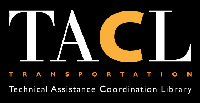For several years, zero-fare transit has been a topic of interest among public transportation agencies. Many of the arguments for zero-fare transit–and barriers to its implementation–were made even more compelling by the ridership impacts brought by the COVID-19 pandemic. Service changes and policy and funding flexibility at the height of the pandemic not only allowed for experiments in fare collection, they also presented an opportunity for agencies to reevaluate the underpinnings of fare policies and the cost of collection processes. As the pandemic and the widespread changes it catalyzed in travel patterns continue to reshape public transportation services and operations, agencies are assessing how zero-fare or alternative fare structures can be leveraged to reduce mobility inequities, increase ridership, improve boarding procedures, decrease the potential of fare related conflicts, and eliminate many costs and staffing burdens associated with fare collection.
While zero-fare has the potential to bring improvements to operational, affordability, and equity aspects of a transit system, it can have downsides as well. This case study highlights several agencies’ experiments with zero-fare transit, delving into their motivations, goals, and outcomes. It also provides a set of key considerations for other agencies exploring such changes for themselves.
Source: https://learn.sharedusemobilitycenter.org/casestudy/zero-fare-transit/
TA Centers: SUMC
Terms: Bus transit, COVID-19, Fare collection, Fares, Operating revenues, Paratransit services, Paratransit vehicles, Public transit, Revenues, Transit buses
Tags: Coronavirus, COVID-19, fare, fare policies, fares, paratransit, public transit, public transportation, revenue, revenue policies, revenues, transit

